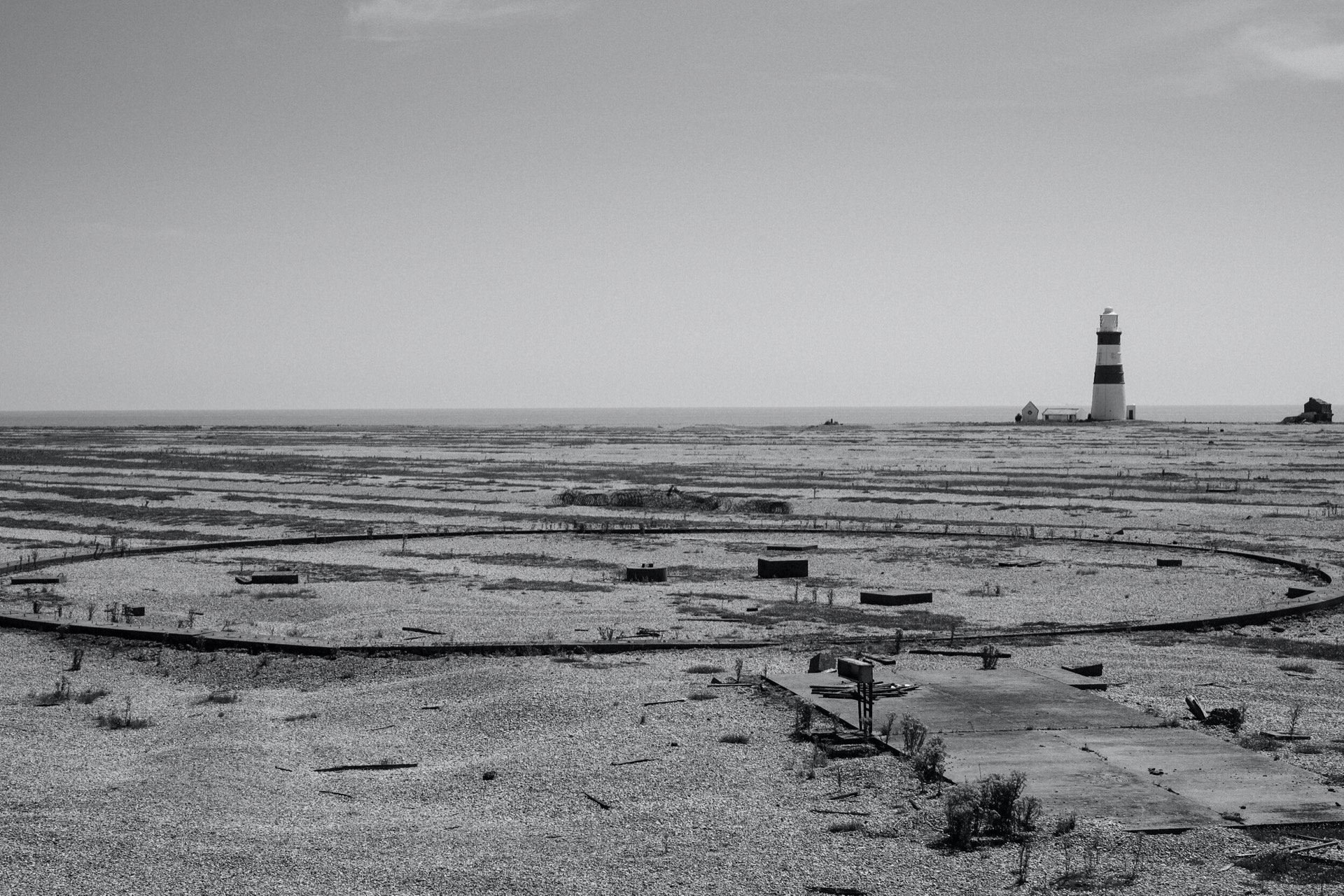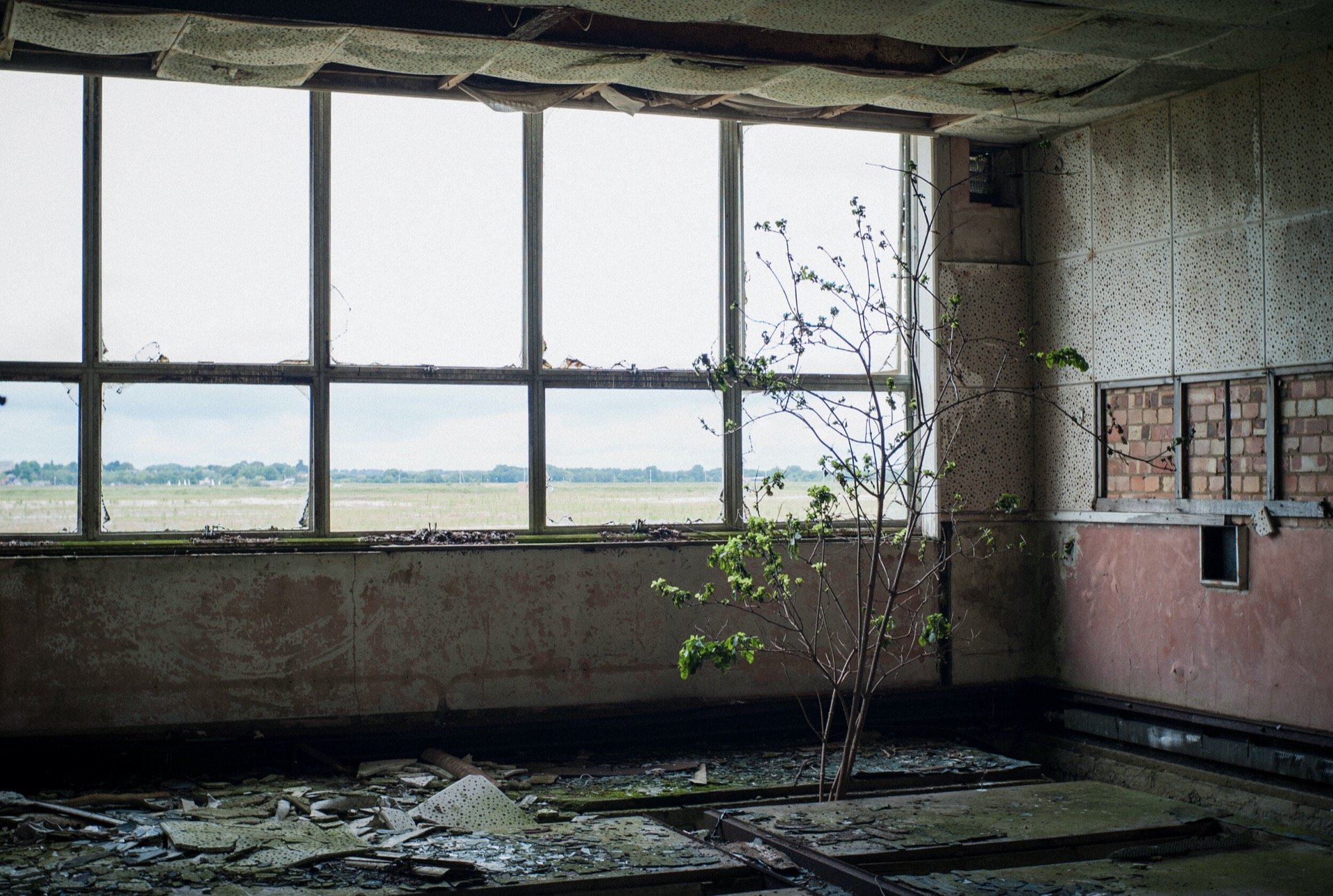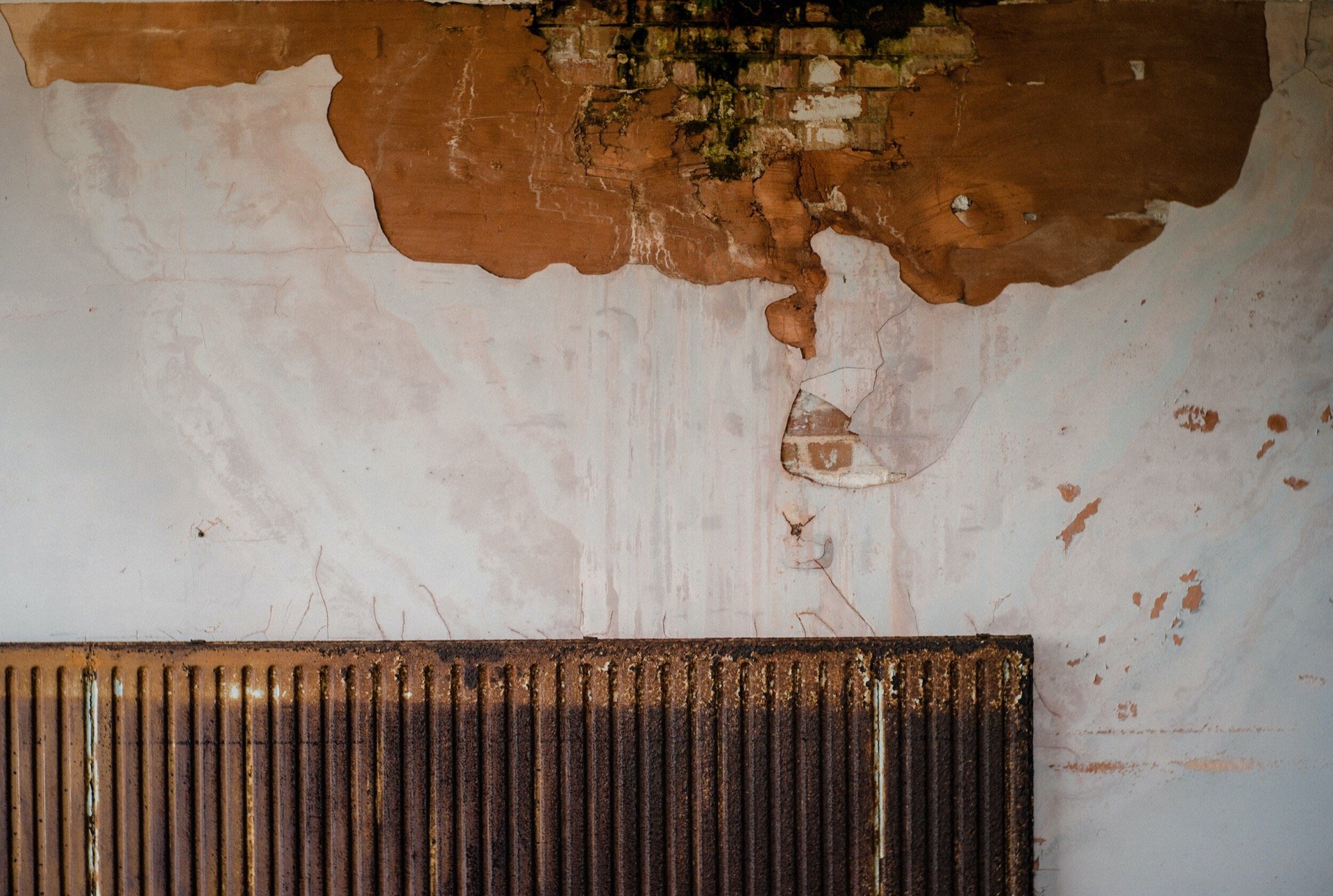Exploring Orford Ness
Orford Ness is a nine-mile split of shingle and marshland on the east coast of Suffolk. A curious corner of the coast which, at first hand, appears as a starkly beautiful, somewhat tranquil landscape. However, it was used by the military to conduct covert experiments into aerial combat tactics, along with the testing of airborne bombs from 1916 onwards. A lot of work that was done here undeniably influenced the course of the Second World War, from bomb ballistics, homing beacons and radar.
Looking at the ness itself, there is a plethora of rich flora and fauna, and as soon as you arrive at this place, you can’t help but be fascinated by what surrounds you and the many secrets that surround the site. As you explore Orford Ness and approach the lighthouse, pictured in the opening of this essay, you can witness the effects of climate change in our current times. Sadly, due to a number of tidal surges in previous years, this lighthouse was demolished in 2020 due to the ever-encroaching sea.
Having recently been inspired by the book ‘Ness’ by Robert Macfarland and Stanley Donwood, I decided to look through my archive of images from a 2016 guided visit to the site by the National Trust.
“A landscape produced by a collision of the human death drive and natural life”
Surrounded by shingle pitted with bomb craters, these sinister structures, known as pagodas, can be seen for miles around the coast and serve as a somewhat grim reminder of what happened here, telling us much about old threats and secrets. These buildings were designed in such a way that in the event of an accident concerning high explosives, the roofs would collapse and enclose the building.
“Ness speaks. Ness speaks gull, speaks wave, speaks bracken & lapwing, speaks bullet, ruin, gale, deception”
Though much of the site has been cleared, many grim reminders of what happened here are left scattered across many parts of the shingle, beaten and battered by wind, which will eventually disintegrate over time.
If ever you get the chance to visit Orford Ness, I would highly recommend it.
Find out more about the history of Orford Ness
Purchase Ness by Robert Macfarland & Stanley Donwood
All images shot with a Leica M8 & Voigtlander 35mm f/1.4 Nokton Classic Lens.











